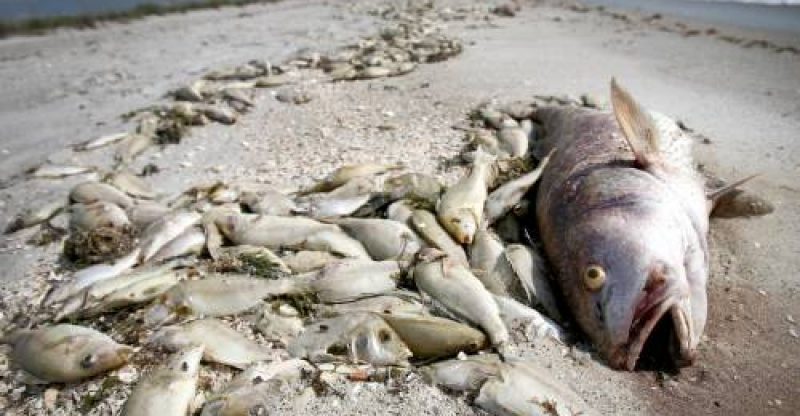The National Oil Spills Detection and Response Agency (NOSDRA) says findings on the dead fishes on the Atlantic coastline indicated high levels of toxicity caused by toxic wastes discharge.
The agency noted that the discharge of toxic materials into the Atlantic may have come from land as the wastes from domestic and industrial sources often empties into the water body.
Premier newspaper recalls that NOSDRA coordinated an multi-agency investigation, aimed at unraveling the cause of the reported massive death of fishes within the nation’s territorial waters.
Mr Idris Musa, Director-General of NOSDRA in a statement made available to NAN on Thursday, said that the high toxicity of the dead fishes and water samples was caused by pollution from heavy metals from industrial and domestic wastes.
He said that relevant government agencies which have mandates on the marine environment collaborated with NOSDRA on the study.
According to Musa, results of the tests conducted confirmed its preliminary findings that the death of the fishes were not linked to oil leakages as the levels of hydrocarbon in the samples tested were within regulatory limits.
“The results of the laboratory tests were perused, and we make explanation on the parameters of concerns that were analysed for the purpose of clarity and understanding.
“As earlier mentioned, the findings did not show hydrocarbons (Oil) as the possible cause of the death of the fishes.
“In the course of the anaiyses, Total Petroleum Hydrocarbons (TPH), Polycyclic Aromatic Hydrocarbon (PAR), Benzene, Toluene Ethylene and Xylene (BTEX) were within regulatory standard limits in water, sediments and fish tissue analyses.
“However, there were some heavy metals such as Cadmium, Chromium Copper, Zinc and Iron that exceeded regulatory standard limits in the coastlines of the
three states, Delta, Bayelsa and Rivers.
“In the water samples taken at the coastline in Bayelsa State, the values of Cadmium and Iron were higher than the regulatory standards limit.
“The Cadmium in the water was between 0.001 and 0.173 miligramme per litre (mg/l) with an average value of 0.064 mg/l. This is above the regulatory limit of 0.05 mg/l as well as the control sample value of 0.08 mg/l.
“Similarly, the value of the iron content in water in the area ranged between 1.914 and 3.408 mg/l with a mean value of 2.503 mg/l. This is above the regulatory limit of 1.00 mg/l.
“The values of the parameters in sediments were substantially within regulatory limits. The values of Chromium and copper in the sampled dead fishes’ tissue were slightly higher than the European Union (EU) Standards limits,” Nusa stated.
The NOSDRA D-G noted that having ruled out oil pollution as cause for the dead fishes, the plausible causes could partially be attributable to other human related pollution activities which are probably land based.
“In this case, while it is commonly observed that most industrial and domestic wastes which contain heavy metals such as cadmium, iron, zinc, copper found their ways into drainages and onward transfer to the water bodies.
“Their deleterious impact may be negative to aquatic species, other mammals and human beings. The main sources of these are batteries, galvanised pipes, fertilisers, sewage sludge and plastics.
“Such may be the case in the analyses of dead fishes found at the coastline in Delta and Bayelsa where chromium was found in fish tissue.
“Copper was also found in the fish tissue sampled in Delta State but not in those of Bayelsa and Rivers State.
“Furthermore, a sudden release of heavy metals is not likely to kill fishes except those trapped at the point of release because, cadmium in particular is highly toxic.
“Long term accumulation (chronic) rather than short term (acute) heavy metals could cause the death of fishes. It is also curious that a specific species of fish is allegedly involved in the circumstance under consideration,” Musa said.
He recommended that the country should pay more attention to the activities of those illegally carrying out fishing in our territorial waters to guard against possible dumping of wastes as well as unwanted aquatic species.



